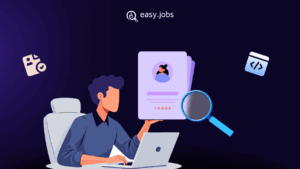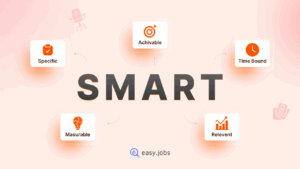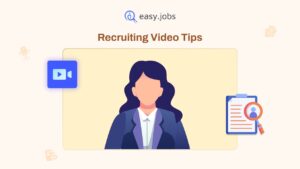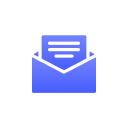Berjuang untuk mempertahankan proses perekrutan selaras dengan tenaga kerja masa kini yang berubah cepat? Rencana perekrutan yang efektif adalah peta jalan Anda untuk membangun strategi perekrutan yang dapat diskalakan dan siap menghadapi masa depan. Apakah Anda seorang pemimpin SDM atau bisnis yang sedang berkembang, menyusun pendekatan strategis sekarang memastikan akuisisi bakat yang lebih cerdas di masa mendatang. Mari kita ungkap hal-hal penting untuk mengembangkan rencana perekrutan yang memenuhi kebutuhan saat ini dan tujuan masa depan.

Apa Itu Rencana Perekrutan?
A rencana perekrutan adalah kerangka kerja terstruktur yang menguraikan tujuan perekrutan, jadwal, sumber daya, dan proses untuk menarik dan mempertahankan bakat terbaik. Kerangka kerja ini memandu setiap langkah proses perencanaan perekrutan, dari mengidentifikasi kebutuhan staf hingga menerima karyawan baru.
Tidak seperti strategi akuisisi bakat, yang berfokus pada tujuan jangka panjang dan branding perusahaan, rencana perekrutan menjawab kebutuhan perekrutan langsung dengan eksekusi taktis.
Bisnis memerlukan rencana perekrutan saat memperbesar tim, mengisi peran penting, atau mempersiapkan permintaan musiman. Memiliki rencana perekrutan memastikan perekrutan yang konsisten dan hemat biaya serta membantu menyelaraskan upaya SDM dengan tujuan organisasi yang lebih luas.
📊 Mengapa Anda Memerlukan Strategi Perekrutan yang Berwawasan Masa Depan

Pasar kerja berkembang dengan cepat, didorong oleh otomatisasi, AI, dan perubahan ekspektasi kandidat. Agar tetap kompetitif, bisnis harus menyesuaikan diri strategi perekrutan untuk menyelaraskan dengan tren perekrutan yang muncul, seperti kerja jarak jauh, tim hibrida, dan alat sumber daya berbasis teknologi.
A perekrutan yang tahan masa depan Pendekatan ini memastikan bahwa Anda tidak hanya mengisi peran saat ini, tetapi juga membangun tenaga kerja yang tangguh dan inklusif. Menekankan Keberagaman, Kesetaraan, dan Inklusi (DEI) bukan lagi pilihan. Ini penting untuk inovasi dan kesuksesan jangka panjang.
Komponen Inti dari Rencana Perekrutan yang Efektif
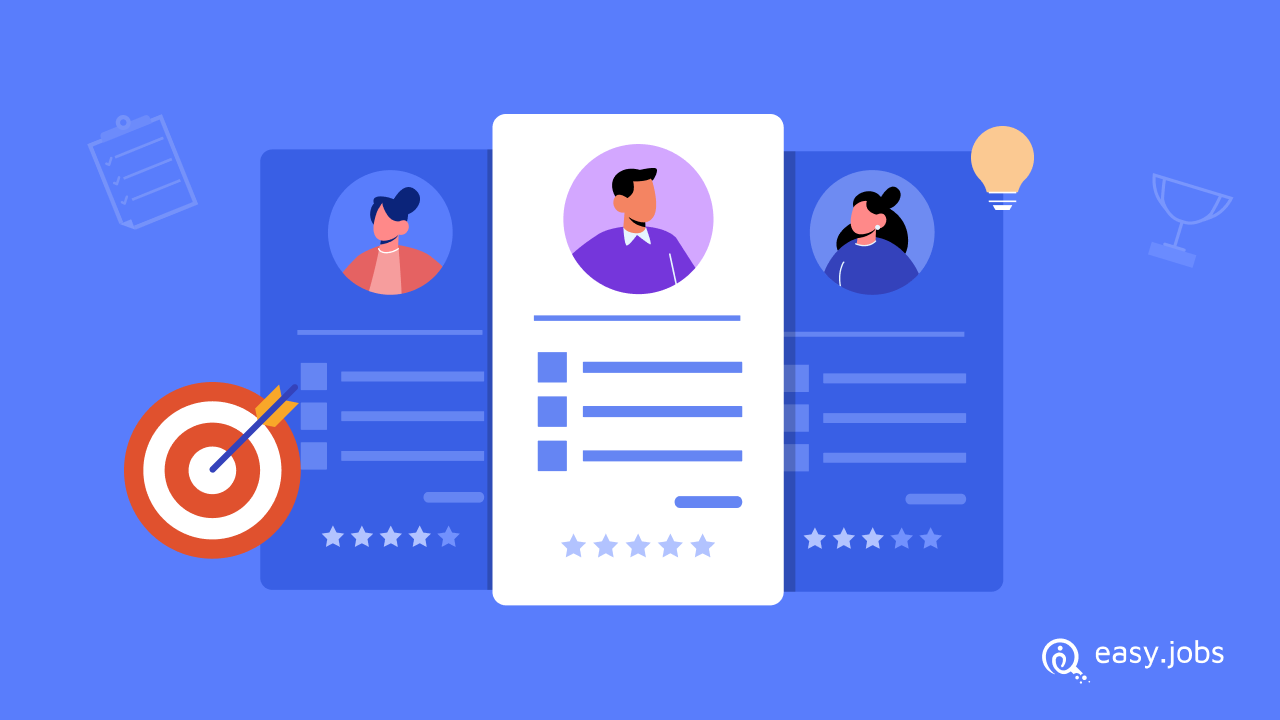
Sebuah kesuksesan rencana perekrutan bukan hanya sekadar mengisi lowongan. Ini mempersiapkan organisasi Anda untuk menarik dan mempertahankan bakat terbaik secara strategis. Berikut adalah elemen-elemen utama yang harus dimiliki setiap tim perekrutan:
Perencanaan dan Peramalan Tenaga Kerja
Mulailah dengan detail perencanaan tenaga kerja proses. Menganalisis struktur tim saat ini, mengidentifikasi kesenjangan keterampilan, dan memproyeksikan kebutuhan perekrutan di masa mendatang berdasarkan tujuan bisnis. Ini memastikan perekrutan Anda selaras dengan pertumbuhan jangka panjang.
💰 Penganggaran untuk Perekrutan
Biaya perekrutan bertambah dengan cepat dari iklan pekerjaan dan alat rekrutmen untuk waktu wawancara dan orientasi. Tetapkan anggaran perekrutan yang realistis yang mencakup area-area ini, dengan memperhitungkan kemungkinan-kemungkinan yang tidak terduga.
🌟 Memperkuat Employer Branding
Citra perusahaan Anda berperan penting dalam menarik kandidat. Soroti budaya, nilai, dan tunjangan karyawan Anda di seluruh platform digital agar merek Anda menonjol di pasar yang kompetitif.
📌 Memilih Saluran Sumber yang Tepat
Diversifikasi upaya perekrutan Anda dengan menggunakan campuran saluran:
- 📝 Papan pekerjaan untuk visibilitas yang luas
- 🤝 Rekomendasi karyawan untuk prospek berkualitas
- 📲 Media sosial untuk menjangkau kandidat pasif
- 💼 Agen perekrutan untuk peran khusus
Sebuah efektif rencana perekrutan mengintegrasikan komponen-komponen ini ke dalam kerangka kerja yang dapat diulang dan berkembang seiring dengan perkembangan bisnis Anda. Berinvestasi di area-area dasar ini membantu Anda merekrut dengan lebih efektif dan beradaptasi lebih cepat terhadap tantangan di masa mendatang.
🚀 Langkah-Langkah Membangun Strategi Perekrutan Anda
Membuat sebuah rencana perekrutan strategis memerlukan pendekatan terstruktur yang disesuaikan dengan tujuan bisnis Anda. Ikuti langkah-langkah penting berikut untuk merancang Strategi perekrutan SDM yang dapat ditingkatkan skalanya dan siap untuk masa depan:
Langkah 1: Identifikasi Kebutuhan Perekrutan Saat Ini dan Masa Depan
Mulailah dengan analisis tenaga kerja untuk mengidentifikasi kesenjangan saat ini dan mengantisipasi peran masa depan berdasarkan rencana pertumbuhan, tingkat pergantian karyawan, dan persyaratan keterampilan yang terus berkembang.
Langkah 2: Tentukan Persona Kandidat
Uraikan kualifikasi, pengalaman, nilai, dan keterampilan lunak yang ideal untuk setiap peran. persona kandidat membantu menyederhanakan proses pengadaan dan meningkatkan keselarasan dengan budaya perusahaan.
Langkah 3: Tetapkan Sasaran Perekrutan SMART
Sebelum memulai pencarian sumber daya atau wawancara, penting untuk menetapkan tujuan yang jelas. Sasaran SMART memberikan struktur dan kejelasan, memastikan setiap tindakan perekrutan memiliki tujuan yang pasti. Buat sasaran yang:
- ✅ Spesifik
- 📏 Terukur
- 🎯 Dapat dicapai
- 📌 Relevan
- ⏰ Terikat waktu
Sasaran ini menjaga upaya perekrutan Anda tetap fokus, dapat dilacak, dan berorientasi pada hasil. Dengan sasaran yang ditetapkan, Anda dapat melangkah maju dengan yakin dalam memilih platform sumber daya yang paling efektif untuk menemukan kandidat ideal Anda.
Langkah 4: Pilih Platform Sumber yang Tepat
Untuk menarik kandidat terbaik, penting untuk menemui mereka di tempat mereka berada. Pilih saluran sumber berdasarkan kumpulan bakat target Anda. Ini dapat mencakup:
- 📃Papan pekerjaan khusus industri
- Platform media sosial (LinkedIn, X)
- 👥 Referensi dan mobilitas internal
- 🏫 Rekrutmen kampus untuk peran tingkat pemula
Menggunakan campuran platform ini memastikan pendekatan menyeluruh terhadap penjangkauan kandidat, meningkatkan peluang Anda untuk menemukan kandidat yang tepat. Setelah saluran Anda dipilih, saatnya untuk menyederhanakan proses dengan teknologi perekrutan dan alat otomatisasi yang tepat.
Langkah 5: Terapkan Teknologi Perekrutan dan Otomasi
Menggunakan sistem pelacakan pelamar (ATS), Alat penyaringan berbasis AI, dan CRM perekrutan untuk meningkatkan efisiensi dan meningkatkan pengalaman kandidat.
Langkah 6: Tetapkan Garis Waktu dan Tetapkan Tanggung Jawab
Kembangkan jadwal perekrutan yang jelas dan delegasikan tugas kepada anggota tim. Tetapkan siapa yang bertanggung jawab atas pemasangan lowongan kerja, penyaringan, wawancara, dan orientasi untuk menghindari penundaan dan kebingungan.
Dengan mengikuti langkah-langkah ini, Anda akan membangun rencana perekrutan strategis yang memberdayakan tim SDM Anda untuk menarik bakat yang tepat pada waktu yang tepat, mendukung keberhasilan bisnis jangka panjang.
🛠️ Alat & Teknologi untuk Mendukung Perencanaan Perekrutan
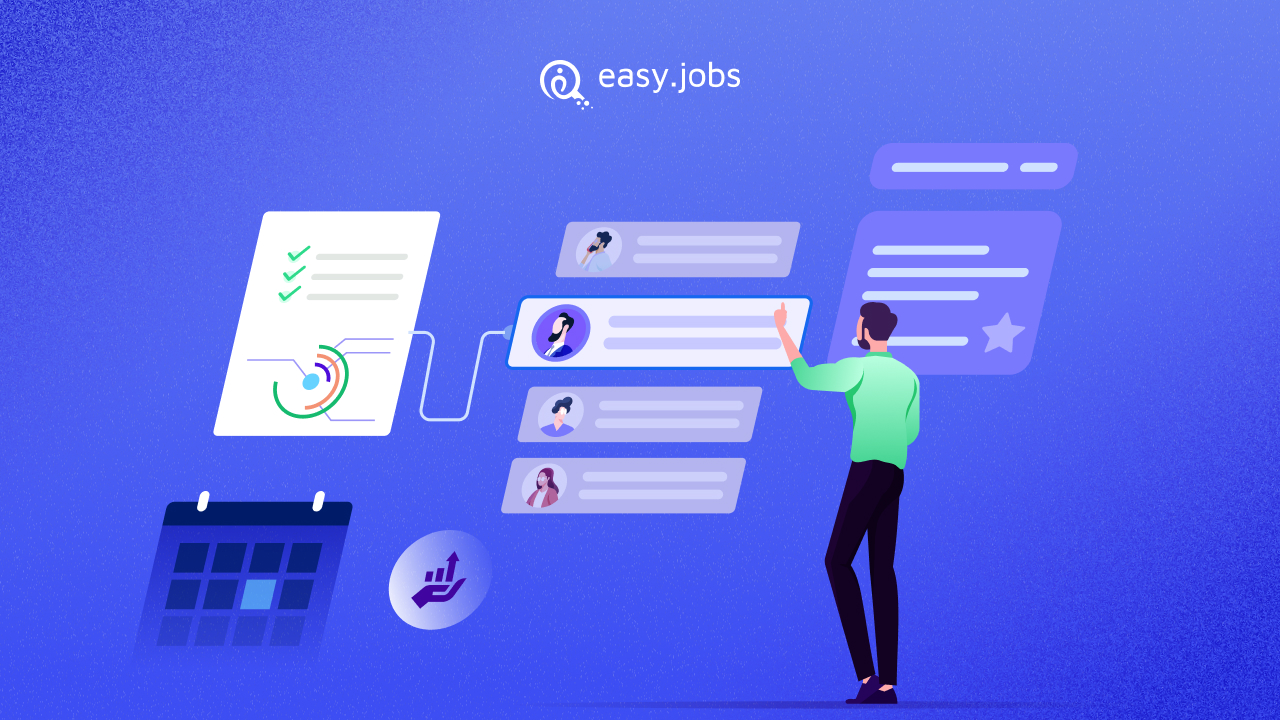
Modern proses perencanaan perekrutan lebih efisien dan efektif bila didukung oleh alat yang tepat. Mengintegrasikan teknologi ke dalam strategi perekrutan tidak hanya menyederhanakan alur kerja tetapi juga meningkatkan pengambilan keputusan melalui data dan otomatisasi. Berikut adalah alat penting untuk mendukung rencana perekrutan Anda:
🗂️ Sistem Pelacakan Pelamar (ATS)
ATS merupakan fondasi sebagian besar tumpukan teknologi perekrutan. ATS membantu mengelola lowongan pekerjaan, aplikasi, komunikasi kandidat, dan jadwal wawancara dalam satu platform terpusat, sehingga mengurangi beban kerja administratif dan meningkatkan pengalaman kandidat.
🤖 AI dalam Perekrutan
Kecerdasan buatan mengubah cara perusahaan mencari dan mengevaluasi bakat. Alat yang didukung AI dapat:
- Layar melanjutkan dalam skala besar
- Cocokkan kandidat dengan peran menggunakan algoritma berbasis keterampilan
- Otomatisasi penjangkauan kandidat awal
Hal ini menghemat waktu dan meminimalkan bias tidak sadar dalam perekrutan tahap awal.
📈 Alat Analisis dan Pelaporan
Data adalah kunci untuk mengoptimalkan strategi perekrutanPlatform analitik rekrutmen melacak metrik utama, termasuk waktu pengisian, sumber perekrutan, dan kualitas kandidat. Wawasan ini memungkinkan Anda untuk menyempurnakan proses perencanaan perekrutan dan membuat keputusan yang tepat dan selaras dengan tujuan bisnis.
Anda dapat memanfaatkan alat Perangkat Lunak Perekrutan AI seperti pekerjaan mudah untuk solusi ini, yang akan membantu Anda dengan analitik dan pelaporan, menampilkan fitur-fitur yang didukung AI yang memudahkan proses perekrutan Anda.
💬 Alat Kolaborasi dan Komunikasi
Menggunakan alat terintegrasi seperti Slack, Microsoft Teams, atau Trello dapat meningkatkan kolaborasi antar tim perekrutan, terutama di lingkungan kerja jarak jauh atau hybrid.
Dengan memanfaatkan teknologi ini, rencana perekrutan Anda menjadi lebih tangkas, terukur, dan selaras dengan tuntutan perekrutan yang bergerak cepat saat ini.
⚠️ Kesalahan Umum yang Harus Dihindari dalam Rencana Perekrutan Anda
Bahkan orang yang paling berniat baik sekalipun rencana perekrutan dapat gagal tanpa pelaksanaan yang cermat. Menghindari kesalahan umum ini dapat membuat perbedaan antara jalur bakat yang berkembang dan tantangan perekrutan yang berkelanjutan:
1. Perekrutan Reaktif
Menunggu hingga posisi kosong untuk mulai merekrut sering kali menyebabkan keputusan yang terburu-buru dan perekrutan yang buruk. Proaktif strategi perekrutan, dibangun berdasarkan perkiraan tenaga kerja dan jalur bakat, memastikan Anda selalu siap.
2. Kurangnya Data dalam Pengambilan Keputusan
Mengabaikan metrik perekrutan, seperti waktu perekrutan, biaya per perekrutan, atau efektivitas sumber daya, dapat menyebabkan praktik yang tidak efisien. Integrasikan analitik ke dalam proses perencanaan perekrutan untuk membuat keputusan yang lebih cerdas dan berdasarkan data.
3. Employer Branding yang Buruk
Kandidat meneliti perusahaan Anda sebelum melamar. Pencitraan merek yang lemah atau tidak konsisten dapat menghalangi bakat terbaik. Pamerkan budaya, nilai, dan kisah sukses karyawan Anda untuk menarik orang yang tepat.
4. Ketidaksesuaian dengan Tujuan Perusahaan
Milikmu Strategi perekrutan SDM harus mencerminkan visi bisnis Anda yang lebih luas. Gagal menyelaraskan perekrutan dengan tujuan strategis, seperti rencana ekspansi atau penawaran layanan baru, dapat menghambat pertumbuhan dan membuang-buang sumber daya.
Menghindari jebakan ini membantu menciptakan rencana perekrutan yang kuat dan terukur yang mendukung kebutuhan saat ini dan ambisi masa depan.
📊 Mengukur Keberhasilan Strategi Perekrutan Anda
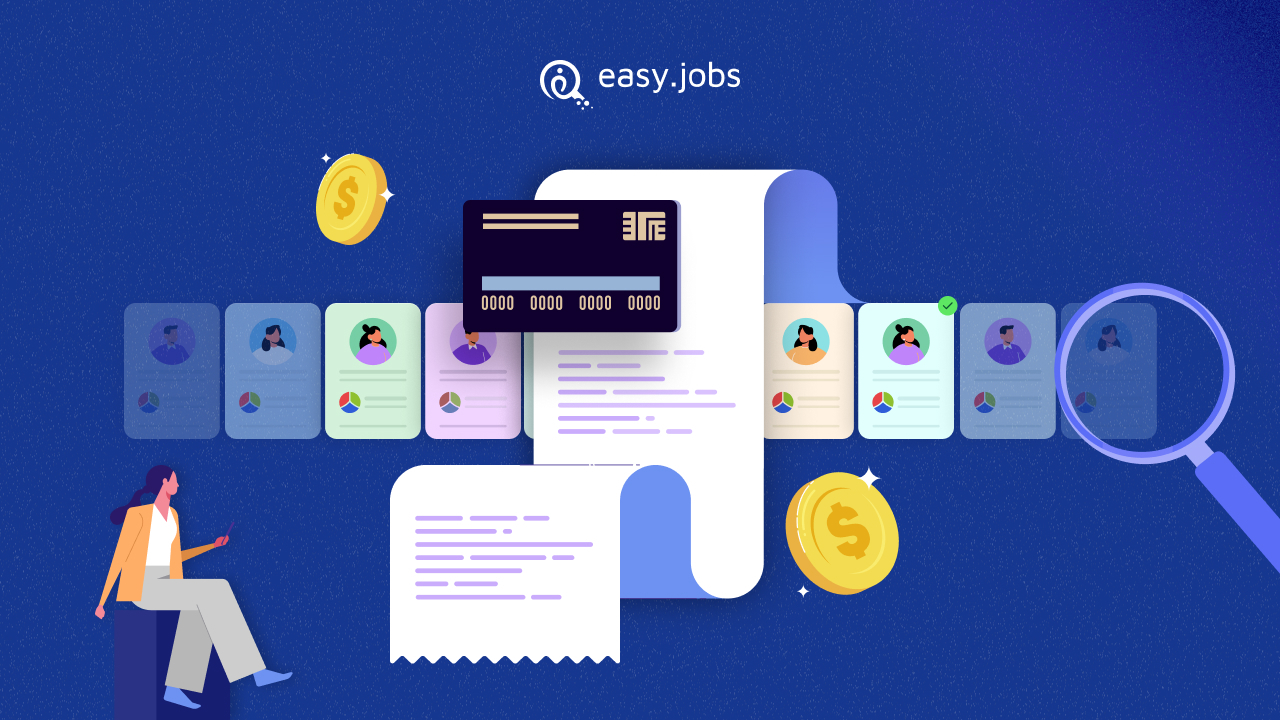
Membuat sebuah rencana perekrutan hanya setengah dari perjuangan; mengukur efektivitasnya sangat penting untuk perbaikan berkelanjutan. Dengan melacak indikator kinerja utama (KPI), Anda dapat menyempurnakan strategi perekrutan dan memastikan keselarasan dengan tujuan organisasi.
Metrik Utama yang Perlu Dilacak
- ⏱️ Waktu Pengisian: Mengukur jumlah hari yang dibutuhkan untuk mengisi posisi. Waktu yang lebih singkat sering kali menunjukkan efisiensi proses perencanaan perekrutan, sementara periode yang lebih panjang mungkin menandakan adanya kemacetan.
- 🌟 Kualitas Sewa: Menilai nilai yang dibawa oleh karyawan baru berdasarkan kinerja, retensi, dan kecocokan budaya. Metrik ini membantu Anda mengevaluasi seberapa baik metode sumber dan pemilihan sedang kerja.
- 💸 Biaya per Sewa: Menghitung total pengeluaran perekrutan dibagi dengan jumlah karyawan yang direkrut. Pemantauan biaya per sewa membantu Anda menyeimbangkan efektivitas perekrutan dengan pengendalian anggaran.
Merangkul Perbaikan Berkelanjutan
Keberhasilan dalam perekrutan bukanlah sesuatu yang statis. Tinjau data kinerja secara berkala, kumpulkan umpan balik dari manajer perekrutan dan karyawan baru, dan ulangi proses perekrutan Anda. Strategi perekrutan SDM untuk memenuhi tuntutan pasar yang terus berkembang.
Pendekatan yang adaptif dan berbasis data memastikan rencana perekrutan Anda tetap siap untuk masa depan dan terus memberikan hasil berdampak tinggi.
🔭 Tren Masa Depan dalam Perekrutan yang Perlu Anda Perhatikan

Untuk membangun sebuah perekrutan yang tahan masa depan strategi, tetap unggul dalam persaingan negara berkembang Tren perekrutan masa depan sangatlah penting. Seiring dengan berkembangnya teknologi, ekspektasi tenaga kerja, dan model bisnis, pendekatan Anda terhadap akuisisi bakat juga harus berkembang. Berikut adalah tren utama yang membentuk kembali lanskap perekrutan:
🧠 Meningkatnya Perekrutan Berbasis Keterampilan
Perusahaan mengalihkan fokus dari gelar dan jabatan ke keterampilan dan kompetensi tertentu. Pendekatan ini membantu mengidentifikasi kandidat berpotensi tinggi yang mungkin terlewatkan dalam proses penyaringan tradisional dan mendukung model perekrutan yang lebih inklusif.
📈 Penekanan pada Mobilitas Internal dan Peningkatan Keterampilan
Daripada merekrut karyawan eksternal untuk setiap posisi, banyak organisasi berinvestasi pada tenaga kerja mereka saat ini. Promosi dari dalam dan menawarkan kesempatan untuk meningkatkan keterampilan tidak hanya meningkatkan retensi tetapi juga menciptakan tim yang lebih tangkas dan siap menghadapi masa depan.
🌍 Memprioritaskan DEI dan Perekrutan Inklusif
Keberagaman, Kesetaraan, dan Inklusi (DEI) bukan lagi sekadar kata kunci; melainkan komponen penting dari organisasi yang berkembang pesat. Hal itu sangat penting bagi keberhasilan bisnis. Perusahaan yang berwawasan ke depan menanamkan keberagaman, kesetaraan, dan inklusi (DEI) ke dalam setiap tahap proses perekrutan mereka, mulai dari deskripsi pekerjaan hingga panel wawancara dan metode evaluasi.
🏠 Beradaptasi dengan Pekerjaan Jarak Jauh dan Hibrida
Pekerjaan jarak jauh kini menjadi tren. Strategi perekrutan yang sukses kini memperhitungkan kumpulan bakat yang lebih luas, komunikasi asinkron, dan proses orientasi yang ramah jarak jauh. Fleksibilitas dan kemampuan beradaptasi adalah kunci untuk melibatkan bakat terbaik saat ini.
Dengan mengintegrasikan ini Tren perekrutan masa depan ke dalam strategi Anda, Anda akan memastikan perencanaan perekrutan tidak hanya relevan saat ini tetapi juga tangguh menghadapi tantangan tenaga kerja masa depan.
🎯 Raih Kesuksesan dengan Perencanaan Perekrutan Strategis
Perencanaan perekrutan yang kuat bukan hanya tentang perekrutan untuk hari ini. Ini tentang mempersiapkan bisnis Anda untuk masa depan. Dengan menggabungkan wawasan berdasarkan data, menyelaraskan dengan tujuan jangka panjang, dan beradaptasi dengan tren perekrutan di masa mendatang, Anda dapat membuat rencana perekrutan strategis yang menarik, mempertahankan, dan mengembangkan bakat terbaik.
Dari perencanaan tenaga kerja hingga adopsi teknologi dan inisiatif DEI, setiap elemen strategi perekrutan SDM Anda harus mendukung pertumbuhan berkelanjutan dan tim yang siap menghadapi masa depan.
Jika Anda merasa artikel ini berharga dan ingin lebih banyak wawasan tentang topik seperti perencanaan perekrutan dan strategi perekrutan, pastikan untuk berlangganan blog kamiUntuk diskusi, tips, dan jaringan secara langsung, bergabunglah dengan kami Komunitas Facebook dan terhubung dengan sesama profesional SDM dan pemimpin bisnis.

